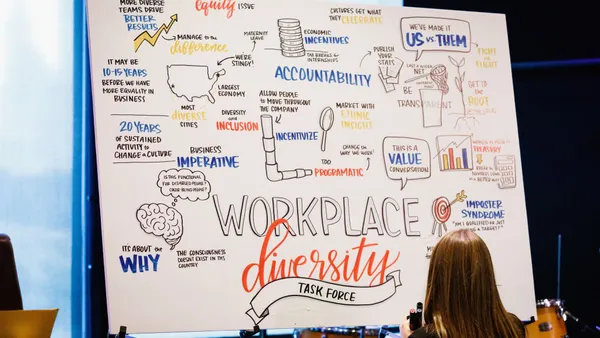Women have made significant gains in the workplace, notching a record high 77.8% labor force participation in mid-2023 after experiencing the highest rate of job losses early in the pandemic. Remote work has played a large factor in this success, allowing for less commute time away from family and greater schedule flexibility. Baby boomers’ rapid exit from the workforce and wage increases also have played a role in the increase in women working or looking for a job.
But recent high-profile return-to-office mandates risk reversing some of this progress.
“There is still so much work to be done; it’s a marathon, not a race,” said Miranda Collard, chief client officer for global digital services company Teleperformance. Collard is also founder of the company’s TP Women initiative, which empowers women across the company’s global workforce of 500,000 employees.
Return-to-office jeopardizes women’s participation in the workforce
Recent return-to-office mandates by many companies now threaten women’s recent advancements in the workforce. Hybrid work is a make-or-break point for women — nearly three-fourths (72%) of women will look for a new job if their employer takes away the flexibility of working hybrid, according to the 2023 International Workplace Group Women Hybrid Workers Sentiment Survey.
Based on data from the same survey, more than half (53%) of women who identify as caregivers see flexible work arrangements as a caregiving benefit because it helps them save money or spend more time participating in family events.
Remote work continues to drive women’s success at Teleperformance, where more than half of U.S. employees work remotely. But also important is the company’s commitment to employee resource groups (ERGs), including TP Women, as well as DEI priorities. Together these initiatives have been critical to developing Teleperformance’s global workforce, of which 54% are women.
Today, women make up 52% of management roles globally at Teleperformance.
“We’ve been able to increase the number of women in executive-level and vice president-level roles by 14%, and the tenure of our female employees in the U.S. has increased by 30% over the last couple of years,” Collard said. “It’s not just elevating women’s voices, but having healthy, authentic conversations about aspirations in and out of business and how to achieve them.”
The most effective initiatives include promoting mentorship, investing in DEI-enriched recruiting and hiring practices, and encouraging men to be allies to help them understand how women want to operate in business, the benefits that are important to women and the importance of parity in salaries.
“We have created a holistic view of how we elevate women’s voices, which brings the whole organization into the effort to foster women’s inclusion in the workplace,” she said.
Keep it simple
Sometimes, the simplest changes can have the largest effect. Collard, a mother of four, shared that while pregnant, a visit to a retailer inspired organization wide change. The retailer had designated parking for expectant mothers, and she was grateful to take 30 fewer steps to the door.
“First and foremost, it’s important to create an environment that gives women a voice and a seat at the table,” she said. “This helps to identify things that can seem simple but are extremely impactful. As an example, creating expectant-mother parking and lactation rooms in our U.S. sites.”
Women’s issues are not the same for all women. There are generational differences and differences based on upbringing, and organization leaders can encourage ERGs to provide a safe space to talk about taboo or uncomfortable topics that affect women in the workplace based on these differences. For example, Collard initiated conversations around menopause. She conceded it wasn’t the most fun topic to discuss, but these were issues that organizations could be a catalyst for within their multigenerational workforce.
“The TP Women leadership team brought forward a conversation to talk about menopause and how our health care plan can support that life stage,” Collard said. “We also thought about how we could bring education and materials forward about the importance of your yearly checkups, mammograms and colonoscopies.”
A long-term commitment
Budget constraints created by the current economic climate have the potential to threaten investments in DEI. However, Collard emphasized the importance of continuing to prioritize these initiatives just as any other strategic priority in the organization.
“It’s important to be deliberate and clear about how you’re tackling these issues to move your organization forward,” she added. “If you define the North Star of what you’re trying to accomplish and keep line of sight on it, you’re always going to make progress. Sometimes you’ll make mistakes — we all do, and that’s OK. But course-correcting and leaning into continuing the activities that allow for progress will pay it forward generationally.”










